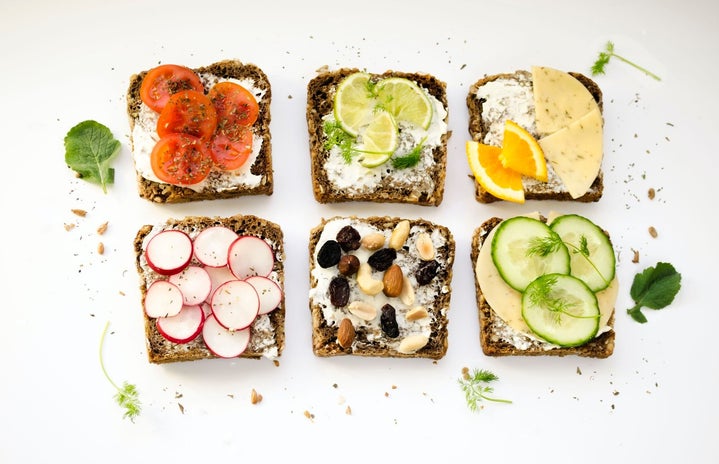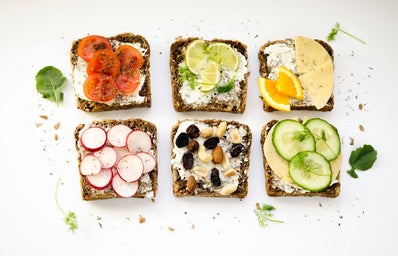Trigger warning: Mentions of disordered eating.
If you feel like you may be suffering from an eating disorder, refer to the following resources:
- National Eating Disorders Association (NEDA)
- NEDA helpline
- “Help with an Eating Disorder” from Cook Counseling
- Cook Counseling
- Schiffert Health Center
Many students aren’t used to the autonomy over the food they’re given in college. Even with a dining plan, decisions about eating cover most of the interrogatives in the book: what, when, where, how often, and how much? Given such a slate, approaching meals can be both exciting and daunting. It’s the responsibility accompanying this independence where problems can arise. Without realizing it, detrimental practices can take place and develop into habits.
If you were like me growing up, you learned three types of eating disorders in elementary school: anorexia, bulimia, and binge eating. You may have even seen some Disney Channel episodes on them. In reality, eating disorders are a lot more complicated and expansive than how much you eat or how much you weigh. An eating disorder develops when unhealthy thoughts surrounding food become habits and eventually begin to influence your behaviors. That includes close monitoring of what or how much you eat, limiting yourself, or feeling guilty after eating.
With our society’s infatuations with appearances and trends, it’s easy to fall into a trap and not recognize it until after roots have formed, especially given our demographic. So, I’ve compiled a set of tips to combat such messages and put your well-being first.
- Listen to Yourself
Your body tends to know when, what, and how much it wants to eat. Pay attention to the signs it gives you, even if they’re abnormal. Sleep levels, increased stress, and fighting off an oncoming sickness are all common issues students face that might cause a change in appetite or cravings. Your body may be more aware of how you’re being affected by your environment than you are, so trust it.
2. Everything in Moderation
Despite what most diets would have you believe, you do not have to eliminate certain foods from your personal food bank. While some foods are certainly more nutritious than others, dividing food into categories of what’s “good” or “bad” for you will just establish feelings of guilt whenever you’re drawn toward the latter. Food is supposed to be a positive experience, not stressful, guilt-ridden, or overwhelming. Feel free to mix a bit of everything into your intake, and your nutrition will suffice.
You also don’t have to strictly meet the serving sizes or recommended ratios for every meal to establish a balance, as long as you acknowledge a rough idea to avoid binge eating behaviors. You can gauge what’s appropriate based on what your body needs and use serving size approximations as a guide. If you find yourself missing out on a component often, find a new recipe or two to incorporate into your cycle, or just add a side to a tried-and-true meal.
3. Preventative Action
With all of the dieting messages we are exposed to in our day-to-day life, it is hard not to internalize them. This can make you question or limit your eating choices without you realizing it. One way to counter this is to cut it off at the source. You’re probably well aware of how your social media activity affects your algorithm, so use it to your advantage. If you see any posts or videos with a potentially harmful message about food or body image, don’t watch it. Request less content similar to it. Your socials may want to feed you damaging information, but they also want to keep you engaged; after a few rejections, it’ll take the hint and back off.
This can also apply to anything that might not be inherently damaging but is triggering for you. For instance, sometimes nutrition labels can tempt over-regulating habits. If you’re prone to this cycle, face that side of the product away from your sight in the pantry or fridge or color over them as soon as you come home from the store. If nutrition labels don’t bother you or help you keep track of what you’re eating, then you can go on as you please. You can cater to your personal experience and cut negativity off at the source.
4. Watch Your Language
Recognizing unhealthy habits in yourself is difficult because we don’t often evaluate our mundane thoughts and actions. If you notice yourself categorizing food into “good” or “bad” or treating food like a reward or punishment (Even when it’s candy or dessert!), try to correct yourself and approach it in a different way. Because we deal with food so often, these behaviors become habits fast, so it’s important to check yourself when you notice them pop up.
5. Eating can be hard. Making food or even ordering it and picking it up can take up a lot of time and energy that you might feel is better spent elsewhere, especially when you’re dealing with a busy stretch of the semester. Keep some easy, reliable, quick meals on hand for times when it doesn’t feel worth it. Whether that’s a microwave mac and cheese, peanut butter and jelly sandwich, or a bagel and cream cheese, it’ll be better than just relying on snacking or skipping a meal altogether, and it’ll come in handy when everything else feels too overwhelming.
It is impossible to avoid pressures to eat a certain way, whether internal or external, but hopefully, with awareness of these messages and conscious practice, you can prioritize your well-being and implement eating habits that put you first.


